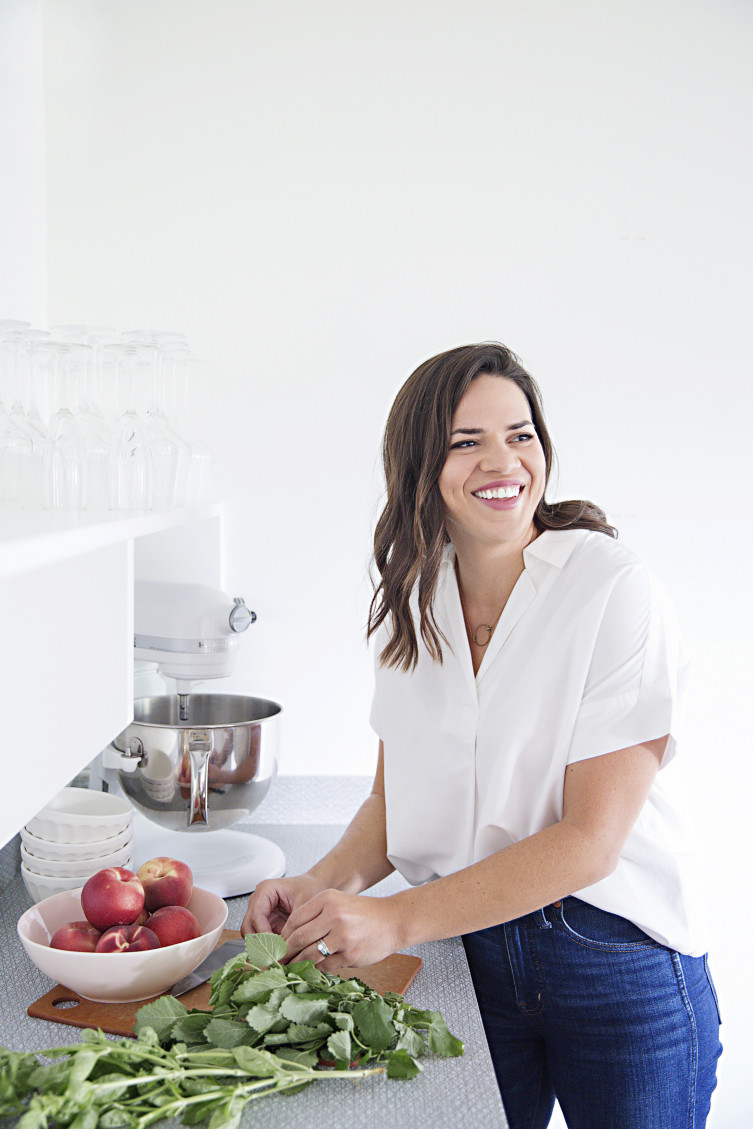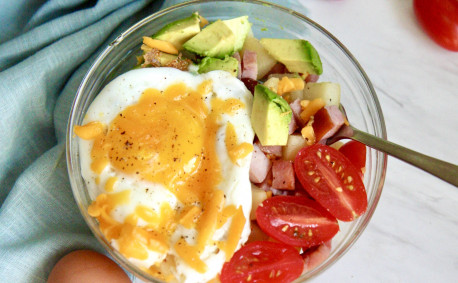Finding a Tasty Balance: Intuitive Eating
Ariel Johnston wants you to feel good about food. Seriously. She believes there are no “bad” foods, and that food should nourish you with nutritional fuel as well as flavor. As a registered dietitian and founder of The Tasty Balance, she’s on a mission to help women and girls break free from a chronic dieting mentality and develop healthy relationships with food.
“People should feel comfortable eating all types of food,” Ariel said. “You can eat a million kale salads, but if you feel stressed eating anything else, that’s not really healthy. Health isn’t synonymous with weight loss. Nutrition isn’t synonymous with cutting entire food groups out of your diet.”
This holistic approach to wellness is something Ariel understands firsthand.
Becoming a Registered Dietitian
Growing up, Ariel was an athlete and focused on fueling her body to perform at peak levels. But she heard mixed messaging about what young women should eat and how their bodies should look.
“There was a lot of skewed information and a lot of pressure,” she said. “I wanted to find a balance.”
Her interest led her to become a registered dietitian. At The Tasty Balance, her services include nutritional counseling as well as sharing a love of food through creating recipes and cooking demonstrations, thanks to a lifelong love of cooking and baking. She helps people navigate the world of nutrition, while showing how easy, fun and rewarding it is to make delicious, nutritious meals and snacks.
“The culinary side of things has been a way for me to repair my own relationship with food. Wanting healthy food to taste good — that’s always been an interest and cooking is a creative outlet,” she said.
What Is Intuitive Eating?
Ariel uses an approach called intuitive eating, which is centered around listening to your body and learning to trust its cues. When she talks about intuitive eating, her face lights up. She is passionate about restoring a healthy balance with food.
“Intuitive eating encourages us to tune into what our bodies are telling us,” she says. “Your body is pretty smart. It tells you when you’re tired, when you’re stressed. But we lose trust in our bodies when it comes to food.”
Navigating the world of food can be challenging. There are so many diets and “rules” about what to eat, what not to eat, how often to eat — it can be downright anxiety-inducing. But intuitive eating rejects the diet mentality and helps people make peace with food. It helps reestablish that trust by focusing on the physical and mental aspects that come into play with food and eating.
It’s a bit like food therapy.
Foods come with a lot of mental baggage beyond the ingredients themselves. There’s a lot of power in how we think of foods. Take foods that are “bad” or “off-limits” (ice cream, anyone?). They seem more desirable and harder to resist. We often tell ourselves we shouldn’t eat these foods. Before we’ve even taken a bite, an entire debate — to eat, or not to eat — has raged in our head. That’s just not a healthy way of thinking about food.
Consider chocolate cake. Does it make you think of celebration or guilt?
A study looked at how these opposite reactions affected people’s behavior and attitudes and found people who associated chocolate cake with guilt had a harder time maintaining or losing weight and felt like they had less control of their own behavior around off-limits foods.
On the flip side, “good” foods that you “should” eat might seem like a chore. And between the two, we can lose a sense of balance about what our bodies really need.
Intuitive eating helps detangle some of those perceptions, so you can see food on more neutral ground.
“It’s a lifelong mentality of getting along with food,” she said.
Intuitive eating also encourages finding pleasure in food.
“The satisfaction factor in nutrition isn’t talked about much, but it’s such a huge part of human behavior when it comes to food,” Ariel said. “If you’re not enjoying what you’re eating, is it really that healthy?”
There are 10 basic principles of intuitive eating:
- Ditch the diet mindset: This mentality is almost everywhere and can be incredibly harmful. Jump off the hamster wheel and find a new way to relate to food.
- It’s ok to feel hungry: Listen to your body’s cues. It will tell you when you are starting to get hungry. Feed it then, rather than waiting until you’re ravenous and likely to eat more than feels comfortable.
- Stop fighting food: Ditch the idea of what you should and shouldn’t eat.
- Take the judgement out of food: Food isn’t good or bad. And you aren’t good or bad for eating certain foods.
- It’s ok to feel comfortably full: Again, listen to your body’s cues. Just like it will tell you when it’s starting to get hungry, it will tell you when it’s starting to get full.
- Enjoy food and eating: Find pleasure in eating. How you eat — enjoying tasty food in a relaxed setting — is just as important as what you eat.
- Food isn’t the answer to feelings: Emotional eating is common, but there are many ways to recognize and manage your feelings without using food.
- Appreciate your body: Finding acceptance no matter your shape or size is important.
- Feel good moving: Moving your body is about finding pleasure in how physical activity of any kind makes you feel. Focus on that rather than on a prescribed numbers game like exercising a minimum of 30 minutes at a high intensity for five days a week.
- Find health gently: There’s no such thing as a perfect food or a perfect diet. Pay attention to which foods not only taste good, but also make you feel good physically. Enjoy those over the long run.
Food Messaging at the Grocery Store
Another area that can trip people up is messaging around food at the grocery store. With marketing lingo like “natural” and “non-GMO” splashed across food packaging, shoppers have a hard time figuring out what’s healthy just by looking at the labels.
“Food marketing is confusing,” Ariel said. “I feel like there’s a mistrust and a demonizing of food.”
Ariel has had the opportunity to connect with farmers around Kansas by participating in Farm Food Tours with several of KFFC’s partner organizations. These tours have helped deepen her understanding of how food is raised and understand how nuanced farming and food marketing are.
“For a lot of people, there’s a disconnect between farmers and the food we actually buy. Farmers are not going to do anything to their food that’s ill-advised,” she said. “Those tours have helped with my understanding of the food system and help me decode the system for my clients.”
Working with Ariel
If you search “intuitive eating” online, you’ll come up with a lot of information. While there are some great introductory blogs, Ariel likes to work one-on-one with clients to fully understand their individual perceptions and issues and map out a personalized way forward.
“Everybody comes to me in a different place,” she said. “Working toward helping people have a healthy relationship with food is really rewarding. I think that health and nutrition should be accessible to all people of all sizes, shapes and races.”
As for Ariel, she practices what she teaches — that people should feel comfortable around all types of foods.
“Ice cream and chocolate are favorite foods. Other favorites are salmon and Brussels sprouts. That’s a wide variety right there,” she said.
To learn more about Ariel, visit her website or follow her at The Tasty Balance on Facebook or @tastybalancedietitian on Instagram.





